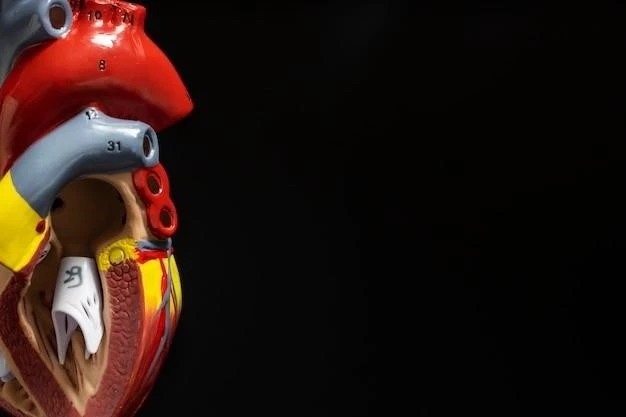Overview of Velocardiofacial Syndrome
Velocardiofacial syndrome (VCFS), also known as DiGeorge syndrome or 22q11.2 deletion syndrome, is a multianomaly genetic condition with an estimated prevalence of 1 in 4000 live births. VCFS is caused by a microdeletion of chromosome 22q11.2.
Velocardiofacial syndrome (VCFS), also known as DiGeorge syndrome or 22q11.2 deletion syndrome, is a multianomaly genetic condition with an estimated prevalence of 1 in 4000 live births. VCFS is caused by a microdeletion of chromosome 22q11.2. This condition results in a range of symptoms affecting various body systems, leading to a unique and complex clinical presentation. The identification of this syndrome is crucial in understanding its prevalence and impact on affected individuals.
Definition and Prevalence
Velocardiofacial syndrome (VCFS), also known as DiGeorge syndrome or 22q11.2 deletion syndrome, is a multianomaly genetic condition with an estimated prevalence of 1 in 4000 live births. VCFS is caused by a microdeletion of chromosome 22q11.2, resulting in a complex range of symptoms impacting various body systems.
Chromosome 22q11.2 Deletion
Velocardiofacial syndrome (VCFS) is caused by a microdeletion of chromosome 22q11.2, a genetic anomaly detected by fluorescent in situ hybridization (FISH) testing. This deletion leads to a range of clinical features affecting various body systems, contributing to the complexity of VCFS presentations.

Clinical Features of Velocardiofacial Syndrome
Velocardiofacial syndrome (VCFS) presents with a range of clinical features impacting various body systems, including congenital heart problems, specific facial features, frequent infections, developmental delay, intellectual disability, and kidney issues. The variability in symptoms within affected individuals adds complexity to the diagnosis and management of VCFS.
Common Symptoms
Velocardiofacial syndrome (VCFS) commonly presents with congenital heart problems, specific facial features, frequent infections, developmental delay, intellectual disability, and various kidney issues. These symptoms can vary in severity and may impact the overall health and well-being of affected individuals.
Variability in Presentations
The variability in presentations of Velocardiofacial syndrome (VCFS) results in a diverse range of symptoms affecting different body systems, leading to unique clinical manifestations that vary widely among affected individuals.
Intrafamilial Variability
Within families, individuals with Velocardiofacial Syndrome (VCFS) may exhibit a wide range of clinical features, even though they share the same genetic mutation. This variability highlights the complex nature of VCFS and the importance of personalized medical management tailored to each affected family member.
Associated Conditions
Velocardiofacial syndrome (VCFS) is associated with various conditions such as kidney problems, schizophrenia, hearing loss, heart defects, cleft palate, and a range of genetic and developmental issues that contribute to the complexity of the syndrome.
Kidney Problems and Schizophrenia
Velocardiofacial syndrome (VCFS) is associated with kidney problems, such as renal anomalies and chronic kidney disease, as well as an increased risk of developing schizophrenia, a severe mental health disorder. Understanding and managing these associated conditions are essential components of the comprehensive care for individuals with VCFS.
DiGeorge Syndrome and Related Names
Velocardiofacial syndrome (VCFS) is also known as DiGeorge syndrome, 22q11.2 deletion syndrome, or Shprintzen syndrome. The condition is characterized by diverse clinical manifestations, including congenital heart problems, specific facial features, hearing loss, and developmental issues.
Connection to Chromosome 22q11.2 Syndrome
Velocardiofacial syndrome (VCFS), also known as DiGeorge syndrome or 22q11.2 deletion syndrome, is associated with a genetic anomaly involving a microdeletion on chromosome 22q11.2. This deletion leads to the diverse clinical manifestations seen in individuals with VCFS, encompassing a range of symptoms impacting various body systems.
Causes of Velocardiofacial Syndrome
Velocardiofacial syndrome (VCFS) is primarily caused by a missing portion of chromosome 22, leading to a diverse range of clinical manifestations affecting various body systems. This genetic anomaly contributes to the complexity of the syndrome and its variable presentations.
Missing Portion of Chromosome 22
The primary cause of Velocardiofacial syndrome (VCFS) is attributed to a missing portion of chromosome 22, particularly the 22q11.2 region. This genetic anomaly leads to a diverse array of clinical manifestations affecting various body systems, contributing to the complexity and variability of VCFS presentations among individuals.
Diagnosis and Confirmation
Diagnosing Velocardiofacial syndrome (VCFS) involves confirming the missing portion of chromosome 22, typically detected through genetic testing. The confirmation of the 22q11.2 deletion is crucial for the accurate diagnosis and management of individuals with VCFS.
Importance of 22q11.2 Deletion Confirmation
Confirming the 22q11.2 deletion in Velocardiofacial syndrome (VCFS) is crucial for a precise diagnosis and appropriate medical management. This confirmation helps healthcare providers understand the genetic basis of VCFS and tailor personalized care plans for affected individuals based on their unique genetic profile.
Developmental Aspects
Velocardiofacial syndrome (VCFS) impacts multiple organ systems, including the heart, face, and palate, leading to developmental issues that vary among individuals. The genetic basis of VCFS plays a crucial role in determining the developmental challenges faced by affected individuals.
Impact on Body Systems
Velocardiofacial syndrome (VCFS) affects multiple organ systems, including the heart, face, and palate. These impacts result in various developmental challenges that can differ significantly among individuals. The genetic foundation of VCFS plays a critical role in the developmental aspects experienced by affected individuals.
Inheritance Pattern
Velocardiofacial syndrome (VCFS) follows an autosomal dominant inheritance pattern. The syndrome is associated with a 3-Mb deletion of contiguous genes on chromosome 22q11.2, leading to a wide range of clinical manifestations that can vary in severity and presentation among affected individuals.
Autosomal Dominant Inheritance
Velocardiofacial syndrome (VCFS) follows an autosomal dominant inheritance pattern, indicating that a single copy of the mutated gene in each cell is sufficient to cause the syndrome. This 3-Mb deletion of contiguous genes on chromosome 22q11.2 contributes to the diverse clinical manifestations observed in individuals with VCFS, with varying severity and presentation.

Naming and Recognition
Velocardiofacial syndrome, also known as DiGeorge syndrome or 22q11.2 deletion syndrome, is recognized under various names including Shprintzen syndrome and conotruncal anomaly face syndrome. The diverse names reflect the complex nature of the syndrome and its varied clinical presentations.
Evolution of Terminology
The terminology for Velocardiofacial syndrome has evolved over time, with different names such as DiGeorge syndrome, 22q11.2 deletion syndrome٫ Shprintzen syndrome٫ and conotruncal anomaly face syndrome being used interchangeably. These varying terms reflect the historical progression in understanding the complexities and diverse clinical manifestations of the syndrome.
Clinical Management and Treatment
Clinical management of Velocardiofacial syndrome (VCFS) involves a multidisciplinary approach that addresses the diverse symptoms affecting various organ systems. Treatment strategies aim to manage congenital heart problems, cleft palate, developmental delays, intellectual disabilities, and other associated conditions to improve the overall quality of life for individuals with VCFS.
Multidisciplinary Approach
Effective clinical management of Velocardiofacial syndrome (VCFS) necessitates a multidisciplinary approach involving various medical specialists, such as cardiologists, geneticists, speech therapists, and developmental pediatricians. The coordination between these professionals ensures comprehensive care tailored to address the diverse needs and challenges of individuals with VCFS. Early intervention and ongoing monitoring are essential components of this holistic approach to optimize outcomes and improve the quality of life for patients with VCFS.
Research and Awareness Efforts
The 22q and You Center is a pivotal organization dedicated to conducting research and raising awareness about Velocardiofacial syndrome (VCFS). By focusing on genetic testing, multidisciplinary management, and patient care, the center plays a significant role in advancing understanding and support for individuals affected by VCFS.
Role of 22q and You Center
The 22q and You Center plays a pivotal role in spreading awareness and conducting research on Velocardiofacial syndrome (VCFS). By focusing on genetic testing٫ multidisciplinary management٫ and patient care٫ the center aims to broaden understanding and support for individuals affected by VCFS٫ thereby enhancing their quality of life.
Impact on Organ Development
Velocardiofacial syndrome (VCFS) has a significant impact on organ development, particularly affecting the heart, face, and other vital organs. The syndrome’s genetic basis plays a crucial role in the development of these organs, leading to a range of structural and functional abnormalities that can vary in severity among affected individuals.
Effects on Heart, Face, and Other Organs
Velocardiofacial syndrome (VCFS) significantly impacts heart development, facial features, and other vital organs. The syndrome’s genetic basis contributes to structural and functional abnormalities in these organs, leading to a range of clinical manifestations that vary in severity among affected individuals. Early detection and comprehensive management are essential for addressing the diverse effects on organ development in individuals with VCFS;
